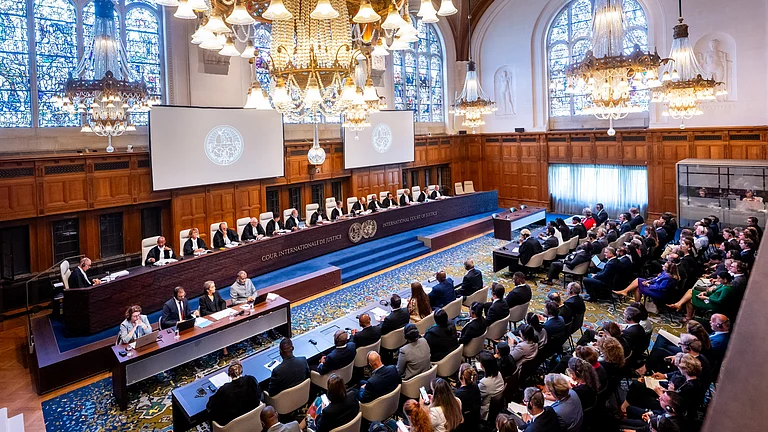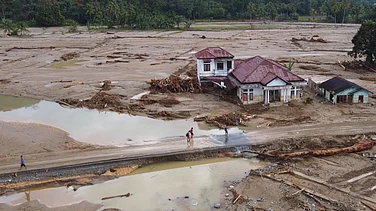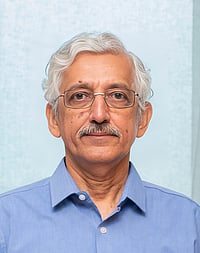Each morning, before the sun has fully cleared the haze over the Rihand Reservoir—some 20km from the thermal power hub of Singrauli, Madhya Pradesh—Rukmini Sahu folds a cotton gamchha around her ten-year-old son’s face and sends him off to school. It's not to shield him from dust or cold—it’s to filter the air. “He coughs less when I tie this,” she says. The cloth is dampened with turmeric water, a home remedy she picked up from her mother, who used it during crop-burning season. That season, she says, never really ends here.
Her son, Pankaj, has had what the doctor at the local PHC calls “persistent bronchitis”—though the prescription sheet only says “asthma.” Twice this year, she’s rushed him to the district hospital when his inhaler failed to calm his wheezing. “We thought it would get better,” she says. “The factory people had told us something was being installed to clean the smoke.” That "something" was a flue-gas desulphurisation (FGD) unit. It never came.
A mile away, in the staff room of the Government Middle School in Pali, headmaster Anil Verma opens his attendance register and shakes his head. “Eighteen absentees today, ten with cough and fever,” he says, flipping back pages to confirm a pattern that has become routine. “It’s not viral. It’s the bad air. This time of year, you can smell it.”
Given the severe health impacts of coal-fired power plants, the government's recent decision to exempt certain plants from installing FGD systems defies logic.
The health impacts of India’s coal-fired power plants stretch far beyond Singrauli. In 2020, emissions from the Super Thermal Power Station at Chandrapur (CSTPS) were linked to 85 premature deaths in this Maharashtra district and 62 in Nagpur, more than 150 km away, according to the Centre for Research on Energy and Clean Air (CREA). That same year, over 30,000 workdays were lost in each city due to pollution-related illness, and there were more than 140 preterm births attributed to exposure. And yet, the government has moved to loosen emission standards.
On July 11, the Ministry of Environment, Forest and Climate Change issued a notification exempting coal-fired power plants located more than 10 km from “populated and polluted” areas from installing FGD systems—equipment that captures sulphur dioxide (SO₂) before it escapes into the atmosphere. The exemption covers nearly 80% of the country’s thermal power capacity.
FGDs are not particularly complex: they work by spraying a limestone or lime slurry into flue gases, which reacts with SO₂ to form gypsum, a benign by-product. The process removes up to 98% of SO₂ emissions before they exit the smokestack. It’s a well-established technology used worldwide to curb air pollution from fossil fuels.
The decision to relax this requirement rests on a 2024 study by CSIR-NEERI, commissioned by NITI Aayog, which argued that FGDs would increase energy consumption and generate an additional 1,225 tonnes of CO₂ emissions daily. The report also claimed that there was insufficient correlation between SO₂ emissions from power plants and ground-level SO₂ concentrations to justify mandatory FGD installation.
Skewed Logic
The argument is convenient—but flawed. It ignores the severe health burden from sulphur emissions and grossly underplays their role in fine particulate pollution. FGDs do increase CO₂ emissions modestly, but the trade-off—better air and fewer deaths—is more than worth it. CREA estimates that the added emissions would amount to less than 1% of India’s total CO₂ output in 2020. “If climate was really the concern, the government wouldn’t be building more coal plants,” says Nandikesh Shivalingam, director of CREA.
However, a closer examination of the CSIR-NEERI study reveals significant flaws in its argument.
What makes the policy shift particularly incongruous is that it comes at a time when India is doubling down on its net-zero emissions pledge. It aims to reach carbon neutrality by 2070, a target that implicitly demands aggressive reduction of both greenhouse gases and toxic co-pollutants like SO₂. Scrapping mandatory FGDs, which could help reduce a major source of PM2.5 as well, not only weakens the credibility of this commitment but risks undermining public trust in India’s transition narrative.
Nor is India a low emitter of SO₂, as the policy suggests. A 2019 Greenpeace study found India to be the world’s largest emitter of SO₂, responsible for more than 15% of anthropogenic hotspots identified by NASA satellite data. The source: fossil fuel combustion in thermal power plants and industrial facilities. Much of the SO₂ converts within hours into aerosol sulphates, forming PM2.5—tiny, deadly particles that penetrate deep into the lungs and bloodstream.
FGDs are specifically designed to stop this transformation at the source. Suggesting that low ground-level SO₂ absolves power plants of responsibility is, at best, misleading. As Shivalingam explains, “The goal is not just to manage ambient SO₂ but to prevent its conversion into PM2.5 in the first place.”
The scale of the problem is sobering. A 2014 study in the journal Atmospheric Environment found that coal plants in India emitted 580 kilotonnes of PM2.5, 2,100 kilotonnes of SO₂ and 2,000 kilotonnes of nitrogen oxides in 2010–11. These emissions were estimated to have caused between 80,000 and 115,000 premature deaths and 20mn asthma cases. The economic cost: ₹16,000–23,000 crore.
Sulphates and nitrates—known as secondary aerosols—constitute more than 60% of the PM2.5 emitted from coal power stations. Their share rises to 75% during the winter months. In most Indian regions, 30–40% of total PM pollution from thermal plants comes from these secondary particles.
The science is not in doubt. “SO₂ settles deep in the lungs and inflames the alveoli, increasing vulnerability to infections,” says Dr Khaiwal Ravindra, professor of environmental health at PGIMER. “Over time, it weakens the respiratory and cardiovascular systems.” Long-term exposure also raises the risk of pneumonia, chronic bronchitis, strokes and heart disease.
Yet, nearly a decade after rules mandating FGD installation were first introduced in 2015, compliance remains abysmal. The original deadline of 2017 was pushed to 2022 and then to 2024. Of 537 thermal units, just 49 have installed the technology. The rest cite cost, space constraints, equipment imports and pandemic-related delays. NTPC began implementation after a 2018 Supreme Court order; most private and state-run utilities have barely moved.
Benefits Outweigh the Costs
The financial argument is often exaggerated. An Energy Policy study estimated the system-wide cost of compliance at ₹7,500 crore per year, or ₹23,500 per tonne of SO₂ abated. But the savings are real. A CSTEP analysis found that installing FGDs at CSTPS alone could have saved ₹1,650 crore in health-related losses in 2020—more than twice the cost of installation.
China’s policy offers a stark rebuttal to India’s justification for relaxing FGD norms. While India’s SO₂ emissions have risen by about 50% since 2007, China managed to cut its SO₂ emissions by approximately 75% over the same period—all while increasing coal consumption by nearly 50% and doubling electricity generation. Crucially, this did not lead to any significant spike in China’s CO₂ emissions, undermining India’s rationale that pollution control technologies would derail climate goals.
In effect, China implemented strict emission controls—including mandatory flue-gas desulphurization, fines for violators and clear reduction targets—and delivered cleaner skies, even as it expanded its coal-based economy.
This indicates that significant SO₂ reductions are achievable without sacrificing power generation or economic growth.
In the end, this is not about technology or affordability. It is about political will. “”The science hasn’t changed,” says Shivalingam. “The reluctance to act has.” India cannot afford to boast about clean energy milestones while letting its coal plants bypass proven pollution controls. Diluting emission norms for short-term economic gain risks both public health and long-term climate credibility.
The government must reconsider. The costs of inaction—lost lives, eroded productivity and ballooning health expenditure—far outweigh the savings from skipped FGDs. Cleaner air is not just a moral imperative. It is an economic one.
For a country eager to present itself as both the workshop and engine room of the 21st-century global economy, India’s willingness to sidestep established pollution controls sends a dissonant message. Investors and multinational firms, increasingly attuned to environmental, social and governance (ESG) criteria, watch such policy shifts with a wary eye. A cavalier approach to public health and pollution risks undercutting India’s narrative as a trustworthy, forward-looking destination for capital and talent. By diluting its own standards, India not only jeopardises public welfare but risks ceding competitive ground to rivals that understand clean growth and reputational capital are now indivisible. Ambition alone no longer impresses global markets—credible action does.


































